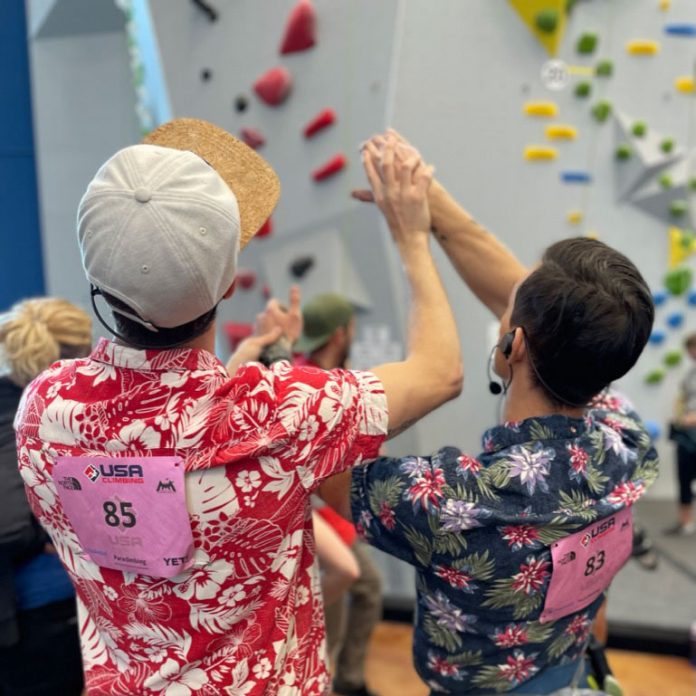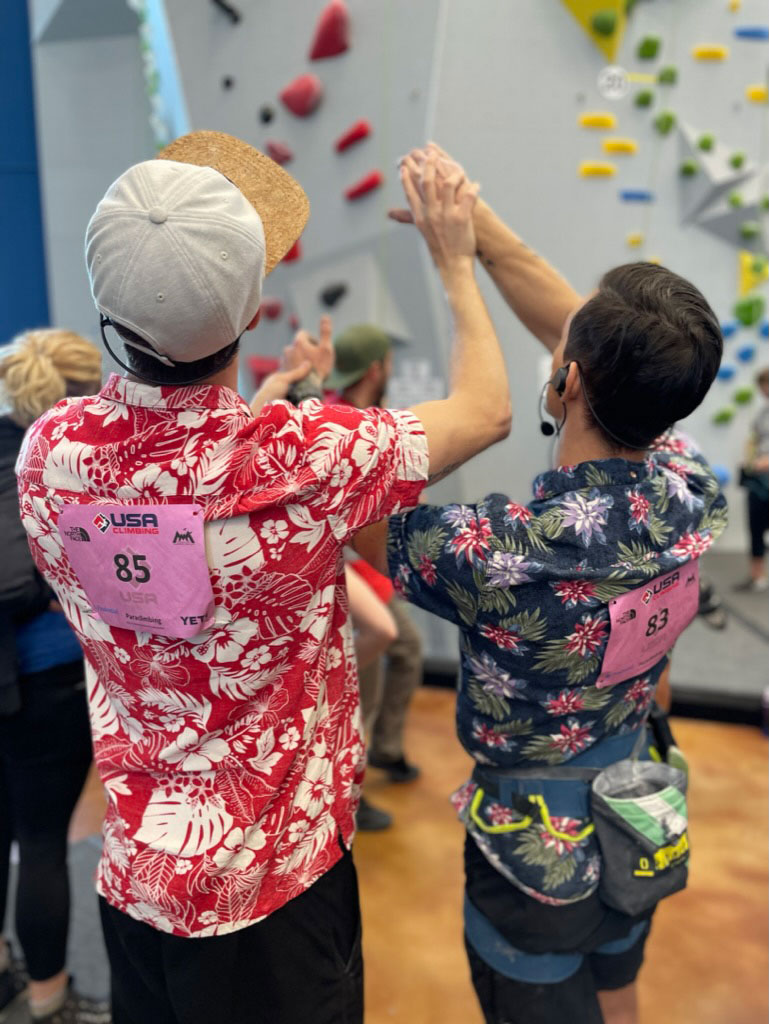
Climbing gyms can be more accessible for visually impaired (VI) climbers, especially when you make it part of your plan from the beginning. World-class blind climber Justin Salas served as an accessibility consultant for Oso Climbing Gym (open since 2020) in Dallas, Texas, and recently explained his accessibility blueprint in an interview with Climbing Business Journal. If you’re “implementing accessibility into design from the ground up, it’s always going to be more beautiful,” says Salas.
Chris Whittaker, Oso’s founder, added that “you tend to get better results” when you include some kind of constraint in a creative process, whether that process is designing a gym or setting a route. “[Because] there are so many different versions of what adaptive means, [you] have to be really intentional in your design process, making sure that you’re thinking about everything,” Whittaker shares.
Salas, whose visual impairment is caused by an optic neuropathy, encourages gym owners, designers and managers to consider how the extra elbow grease put into an accessible design will pay off in the end: “Maybe you have to work a little harder in your creative pursuits to try and accomplish the goal, but it also ends up making a product that’s beautiful.” It can be tempting to think of beauty as a purely visual experience. But with his list of visual impairment accessibility principles and tips, Salas reminds us that, particularly when it comes to climbing, beauty is also about texture, shape and flow.
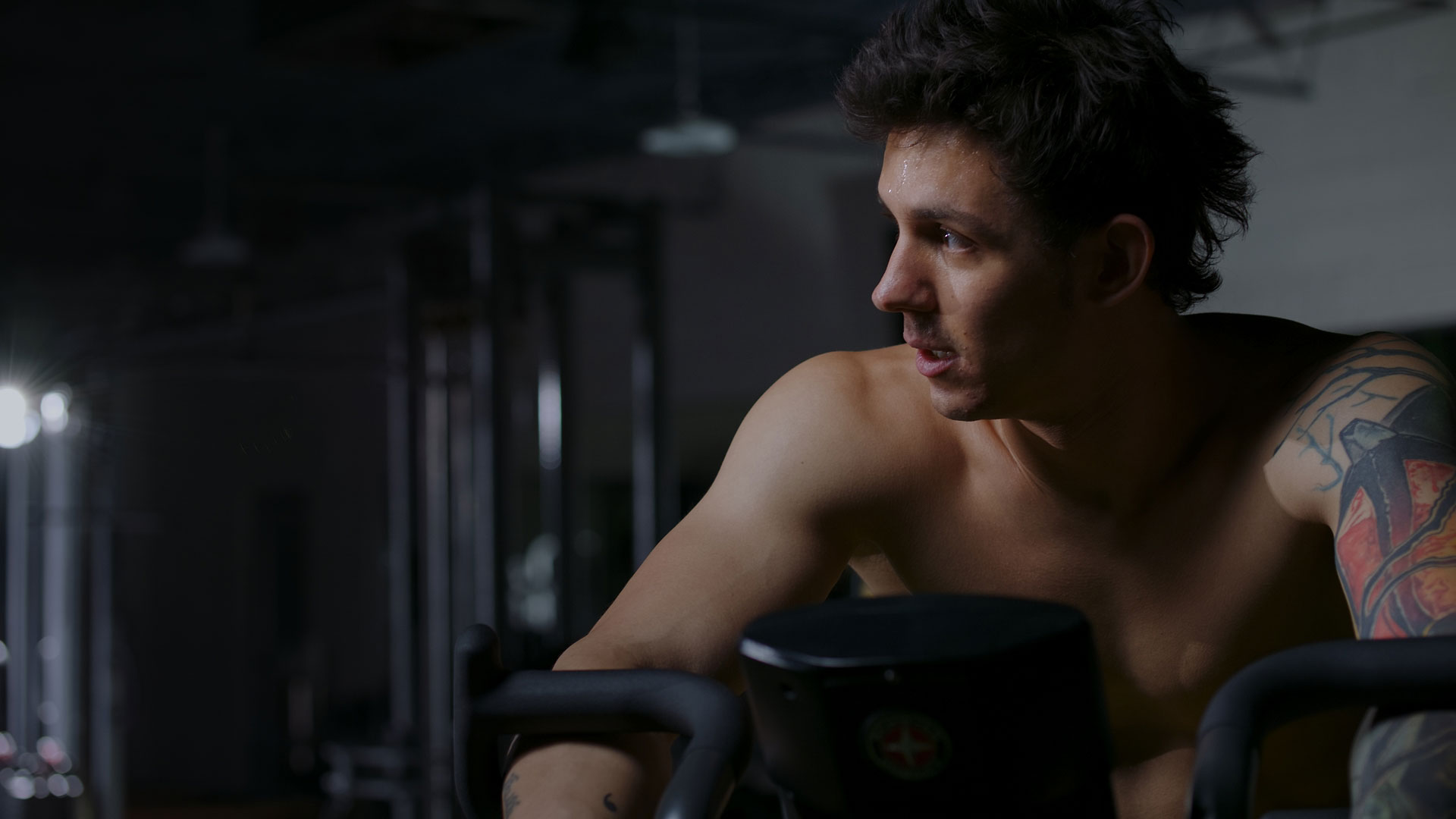
The Principles
Consider Your Colors
Visual impairments (VIs) occur on a spectrum. So, while color choice might not make a difference to all VI climbers, it can be critical for many. Try to organize your gym with distinctly different colors next to each other. If, for example, your free weights, plates and equipment are mostly black, then light gray mats on the floor would be best. Or, if your flooring is black, then go with a bright color for your plates. The same rule applies to routesetting; whenever possible, try to increase the contrast between colors.
Oso, for example, stopped using orange holds entirely. The color is so similar to pink, red and yellow, it was too difficult to maintain high color contrast with orange in the mix. By not using orange holds at the gym, they’re now able to maintain better color contrast between all their routes.
This same principle should be applied to the wall color itself. Salas suggests thinking about the wall “almost like a canvas for the routesetters.” By offering a blank canvas, setters can actually have more freedom, their art is clearly on display, and VI climbers can follow the routes more easily.
Online there are plenty of color-blindness-friendly design tips and resources.
Synchronize Shapes
When Justin Salas talks about accessibility, he speaks about creativity, ingenuity and integration, and gyms ideally being “functionally accessible and elegant.” One solution he offers for achieving that balance is to set routes with holds of a similar shape (and color). Coordinating shape and texture gives you a route that a VI climber can follow with their fingers, while still being eye-catching for sighted climbers glancing around the gym—a functionally accessible and elegant solution.
Salas acknowledges that all gyms have budgets that can limit hold variety. At the very least, he suggests prioritizing “the cruxes to have similar holds, so it’s easier to follow those particular moves if you can’t see and you’re memorizing.”
Additionally, non-textured bolt covers are an excellent way to make sure blind and sighted climbers alike are not stepping on or grabbing bolts.
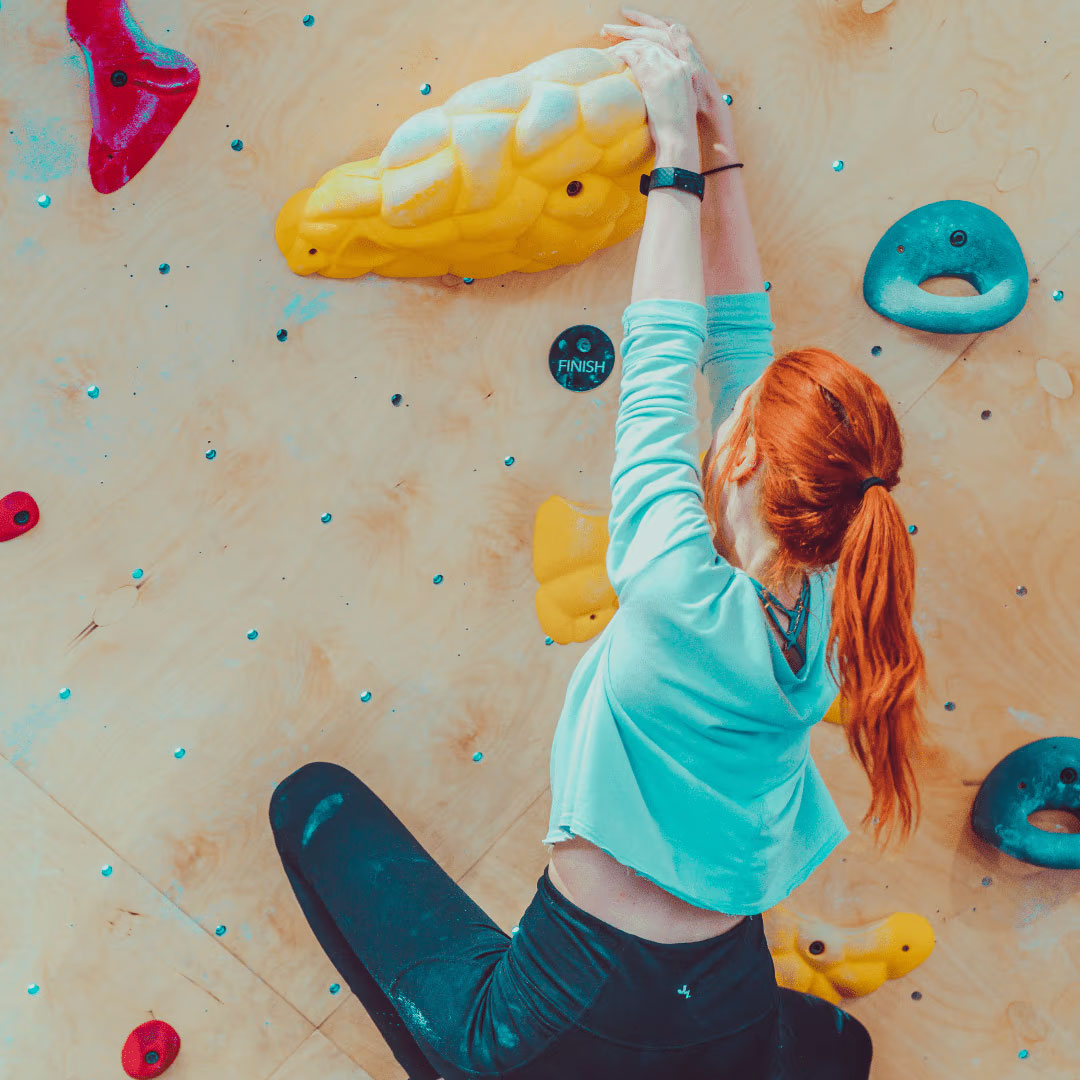
Consistent Lighting; Avoid Shadows
The more visual variables you can take away, the better. So, just as keeping your wall color consistent is preferable, so is having consistent lighting. As Salas says, “If you are dealing with a visual impairment and there’s bizarre, crazy shadows being cast across the walls, it’s like perfect camouflage.”
Window film treatments or shades can greatly improve the VI accessibility of your space, “even if it sounds like a luxury,” says Salas.
Consistent Sound; Avoid Speaker Blast Zones
We’ve all been in this situation before: A climber is trying to communicate at the top of a wall, but you can barely make out their words because they’re near the gym’s speakers. Now, imagine you or your climbing partner has a visual impairment and the verbal cues being garbled by the speakers are even more vital. This type of scenario can be “nerve-wracking” at best, according to Salas, and dangerous at worst (even for sighted climbers).
He recommends, in general, having more speakers at a lower volume instead of just a few blasting on high. If you place your speakers in “key areas with lower volume, you hear the music well, but it’s not overpowering each space,” Salas explains.
Because walls and other hard surfaces reflect sound, a climbing gym can pose a distinct acoustical challenge. You could hire an acoustic consultant, but a good basic rule is to keep your speakers 2-3 feet away from the nearest wall or put a sound absorption panel behind the speaker. These simple adjustments can reduce sound reflection and, in particular, help keep the bass under control.
Intuitive Flow and Organization
When you’re setting a problem or working out the sequence of a route, you’re finding the most intuitive flow. That’s the same mindset you need when designing the layout of your gym. It’s important for people with VIs to be able to memorize key pathways in a space. Salas points out how Oso’s layout is easy to remember because “the gym kind of flows between its segmented areas.”
Simple shapes like squares and circles often work best. “Essentially, if you were ever lost in [Oso] or if you were having a hard time locating a bathroom, you just make one big loop and come back to the front desk,” Salas says.
Oso’s layout is just one example. The general principle to keep in mind here is that “simple is more elegant, but it’s also more useful,” summarizes Salas. He advises thinking about the natural flow of traffic in a gym and grouping areas and equipment together that are often used simultaneously. For instance, you could include cubby areas near the climbing walls for easy access to gym bags and water bottles while climbing.
Salas gives the example of the training area at Oso, where “the hangboards are right next to free weights, which is important if you’re training fingers and you have to put more or less weight onto a harness.” With a sensible layout and clear organization, climbers are more likely to put equipment back where it belongs, making life easier for VI gym members as well as the gym staff tasked with keeping the weight room clean and organized.
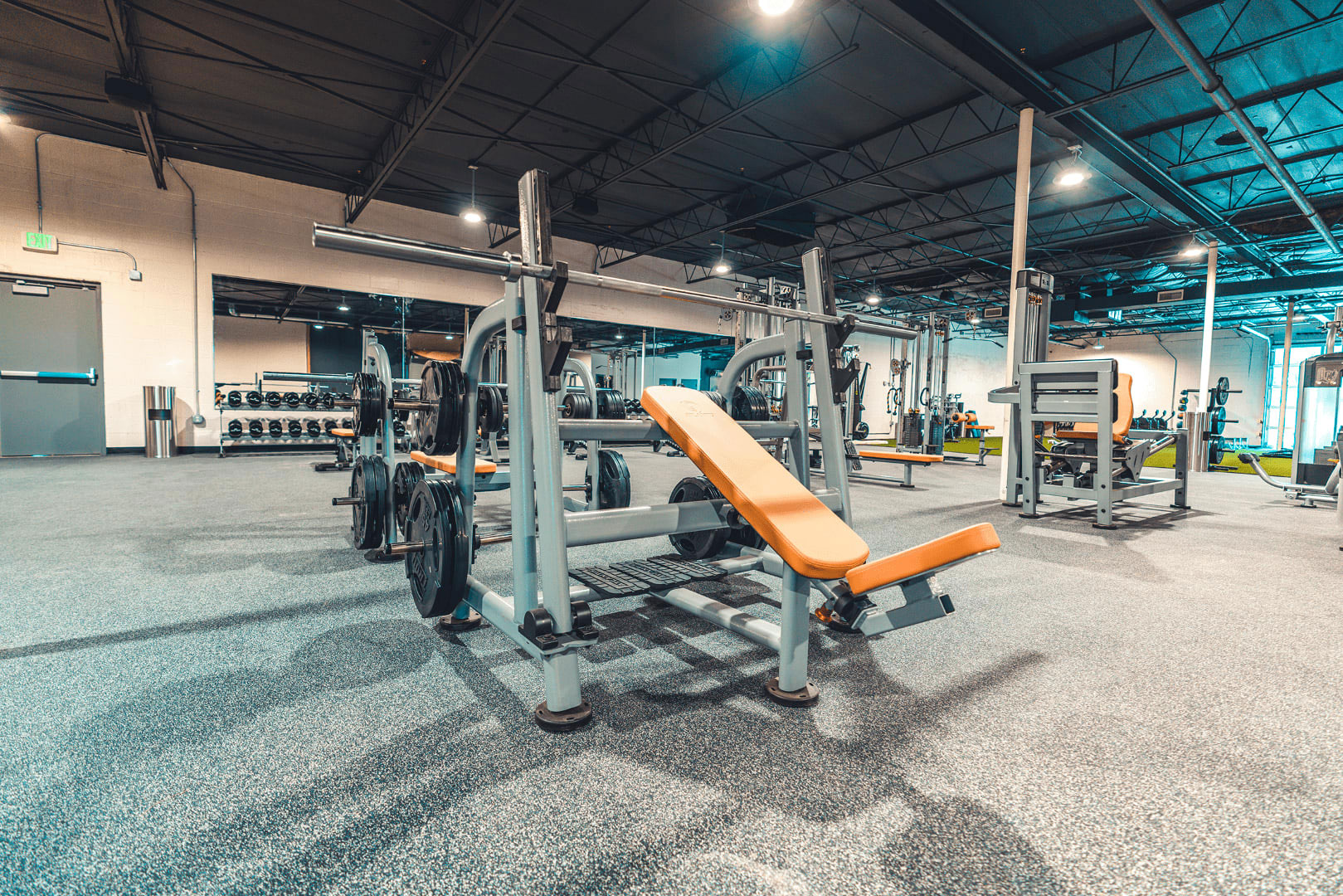
Disability Awareness
Staff education is most beneficial when it involves “real-world training,” says Salas, and not just a slideshow. You could even try giving the employees at your gym “first-hand experiences,” he explains, by having them take turns being blindfolded and leading each other around the gym. “That kind of stuff is invaluable,” he says.
Overall, facilitating an “open dialogue” among staff members around disability topics is important, according to Salas, so they can become comfortable talking about such things. Hiring more people with disabilities will also allow for this dialogue to develop organically within your gym. And actively bringing up these topics in advance will help prepare staff for when people with disabilities come into the gym—which is undoubtedly already happening. One in four Americans lives with a disability, according to the CDC.
Many resources are available online, and you might even have accessibility advocates or programs in your area. Catalyst Sports and Paradox Sports are two such programs operating in the U.S.
The List
As you incorporate accessibility into your gym’s design and operations, below is a quick checklist from Salas to consider:
1) Train staff to work with climbers with disabilities—experienced paraclimbing athletes as well as newcomers.
2) Try to have consistent, bright lighting.
3) Wide and easy to memorize lanes/pathways are extremely important.
4) Put light-colored flooring with dark-colored free weights/plates, and vice versa.
5) Include bright-colored or reflective tape on any steps.
6) Have the cubby area on the same floor and in the same space as the climbing area.
7) Have ample top ropes for climbers who because of health conditions cannot risk big falls. This consideration can include having top rope anchors above some bouldering sections that can be used upon request.
8) Have ramps where possible (keeping in mind not to create a tripping hazard).
9) A consistent climbing wall color allows holds to stand out.
10) When setting routes, don’t put similar-colored routes next to each other.
11) Try to keep the shape/texture of holds within an individual route similar.
12) Avoid speaker blast zones, so the music is not overwhelming in particular areas.
13) Use non-textured bolt covers when possible.
14) Increasing your hold budget can help routesetters to not be limited by supply when making color choices.
15) Choose an accessible location, so climbers who rely on public transportation can reach your gym independently.
16) If your gym is not near a public transit line, consider creating a fund (from a portion of membership dues) for gym members with disabilities. These funds can be distributed directly into a member’s rideshare app and used for transport to and from the gym.
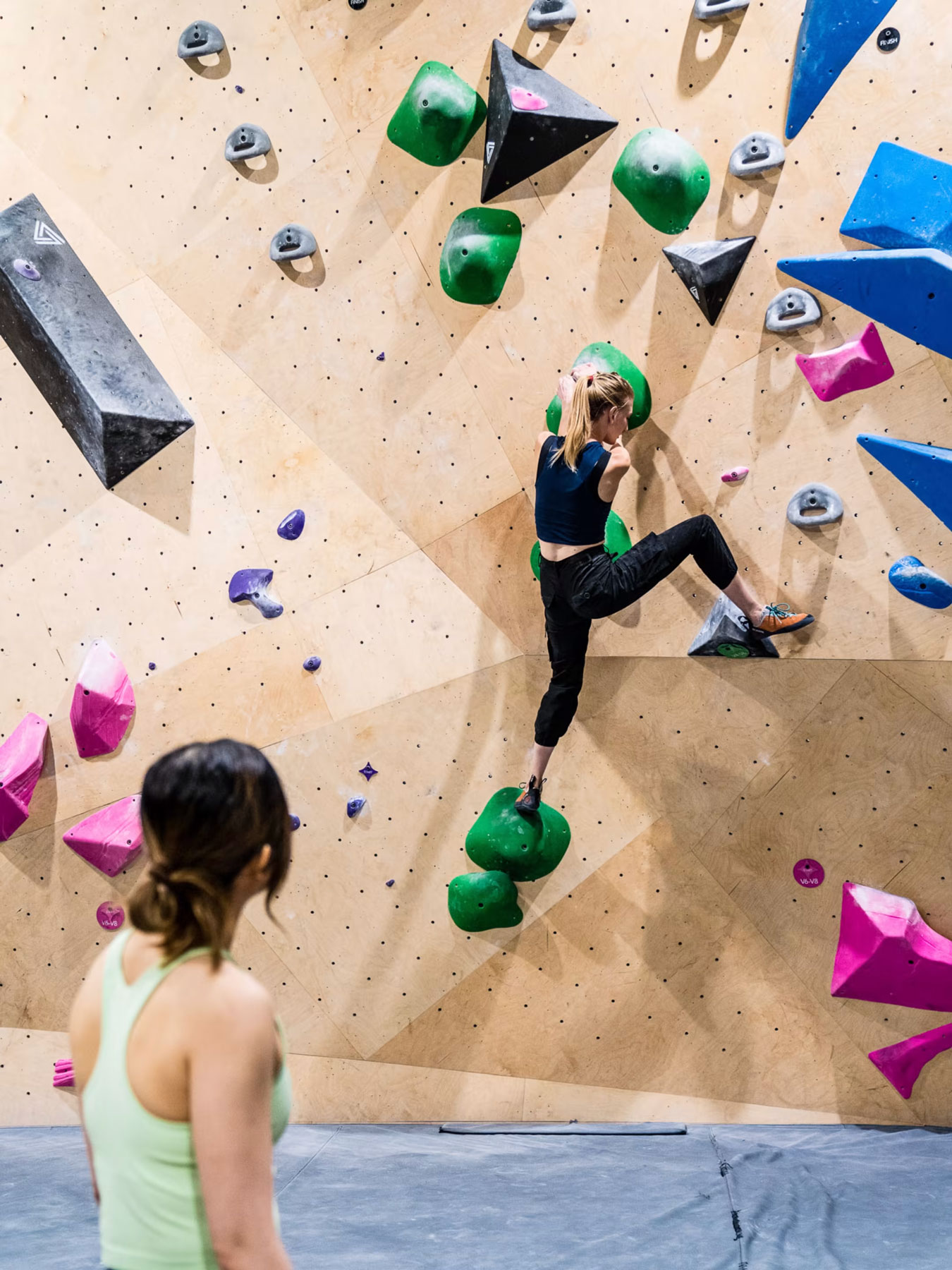
Well Worth the Investment
When talking to CBJ, Salas made it clear that while he doesn’t believe you absolutely must have a person with a disability as your consultant, if you do, you gain much more than just another advisor. The cultural fabric of the team gains one more layer of nuance and complexity, bringing it closer to truly representing today’s diverse climbing community. And as paraclimbing engagement has exploded in recent years, there is a growing population of climbers with disabilities fully qualified and ready for hiring.
There is potential for a cultural shift when you “have a literal ambassador for the disabled community bringing something amazing to the table,” says Salas, “[because] having someone in your presence who deals with any particular type of disability…all of a sudden you bring them into your team and you see how they do their day-to-day lives…it could potentially be really eye-opening to the team.”
Justin Salas is a climber who is blind. But, there are also climbers who are deaf, climbers who are stroke survivors, climbers who use wheelchairs, and so on. The important thing to remember is that they’re all climbers—or in the case of a first timer, they could be, if the doors were opened a little wider (metaphorically and literally).
To open those figurative doors, consider the needs of all climbers across the adaptive community. Depending on the size of your gym, this could mean seeking guidance from a handful of para athletes, crowdsourcing suggestions online, or hiring a consultant who is tapped into the adaptive climbing community. In any case, bear in mind Salas’ words: “Accessibility seamlessly integrated into design, I think, is the way forward and always should be the prevailing thought.”

Emily Chen-Newton is a freelance audio producer and journalist. As a journalist she focuses on athletes with disabilities. She cut her radio teeth in the Allegheny Mountains of West Virginia, but she lived and worked for three years in the flatlands of Nebraska. Now, back in her home state of Kentucky, she climbs in the Red River Gorge on the weekends with her husband and cats. Who doesn’t love a crag cat?!




